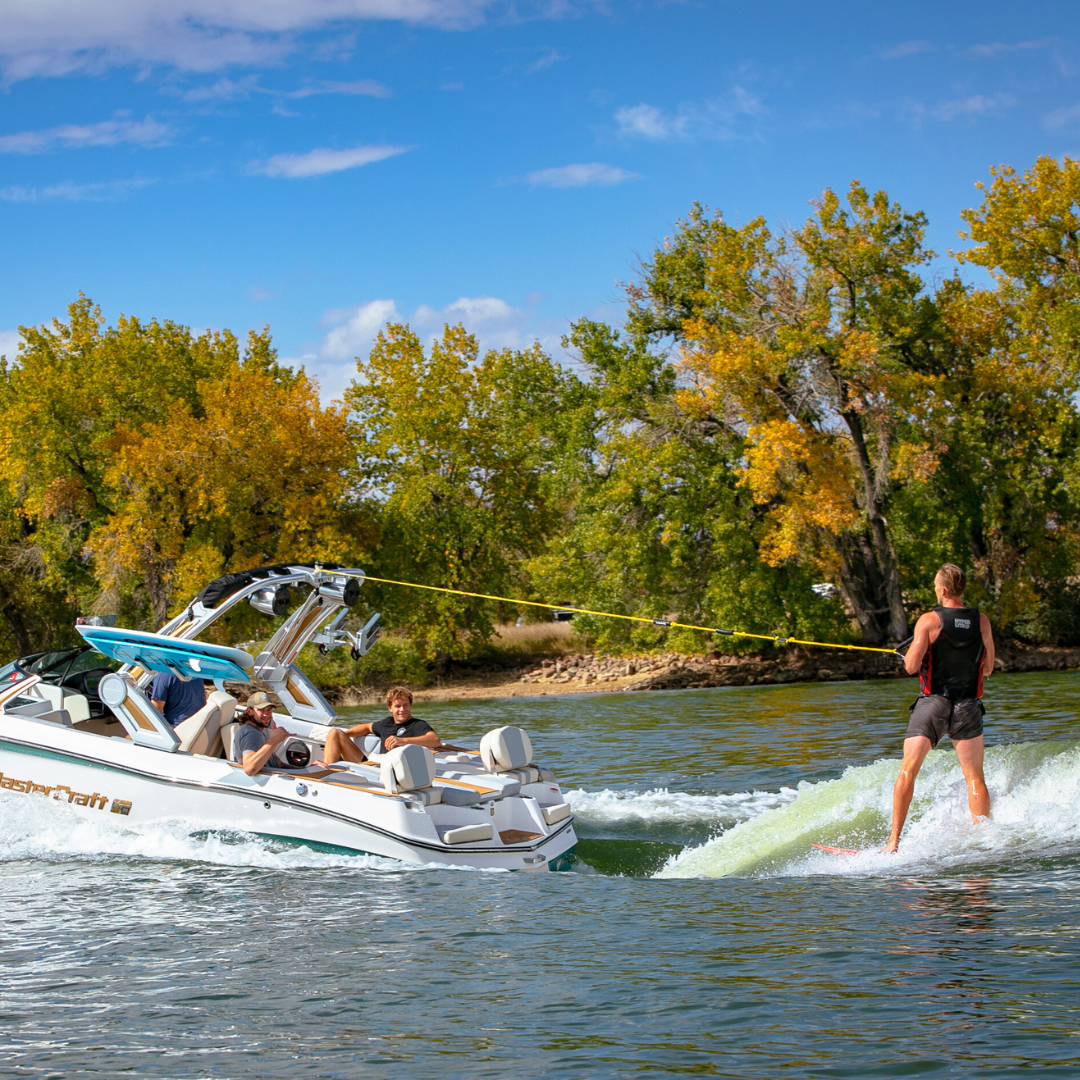
Wakesurfing Has an Accessibility Problem
Share
Wakesurfing is undeniably one of the most exciting watersports out there. The thrill of carving an endless wave behind a boat has attracted thousands of new riders each year. But there's a problem—wakesurfing isn't accessible to everyone. It's time we talk about why that is and, more importantly, how we can start fixing it.
The Cost Barrier
Let's face it: wakesurfing isn't cheap. A new, fully-equipped wakesurf boat can easily exceed $150,000, and even "budget" models hover around $50,000 to $70,000. On top of boat costs, ongoing expenses like fuel, gear, storage, and maintenance can quickly become overwhelming. An average wakesurf session burns through roughly five gallons of gas per hour, translating to around $20-$30 per hour in fuel alone. Add in lessons ($160-$250 per hour), boards ($300-$1500), and lifevestsr, and it's clear why wakesurfing has become synonymous with luxury.
This steep financial entry point restricts wakesurfing primarily to affluent communities, unintentionally branding it as an elite sport and leaving many potential riders behind.
Geographical Limitations
Even if you manage to overcome the financial barrier, geographical accessibility remains a significant challenge. Wakesurfing requires large, deep bodies of water, which aren't conveniently located for everyone. Many potential wakesurfers live hours away from suitable lakes or rivers, turning what could be a weekly passion into an occasional vacation activity.
Moreover, strict regulations intended to protect shorelines from erosion or manage boat traffic further limit available wakesurfing locations. States like Vermont and Michigan have introduced restrictions requiring wakesurf boats to stay hundreds of feet away from shorelines in deep waters, further narrowing opportunities for participation.
Social and Physical Barriers
Beyond cost and geography, wakesurfing's culture can feel exclusive. Without existing social connections or easy access to boat-owning groups, newcomers often struggle to enter the community. There's also a general misconception that wakesurfing requires extreme athleticism, even though the sport is relatively accessible physically. Fortunately, adaptive wakesurfing initiatives are beginning to challenge and change these perceptions, offering opportunities for disabled riders to experience wakesurfing through specialized gear and coaching.
Efforts to Improve Accessibility
Despite these challenges, there's a growing recognition of wakesurfing's accessibility issues—and promising efforts to address them:
-
Affordable Innovations: Brands like Heyday and Axis now offer budget-friendly wakesurf boats, while aftermarket wake shapers allow older boats to create surfable wakes. These innovations are crucial in making wakesurfing financially feasible for more enthusiasts.
-
Sharing Economies: Peer-to-peer boat rental platforms and fractional ownership arrangements are emerging as effective ways to reduce individual costs. Boat clubs and organized groups also help new riders enjoy the sport without significant upfront investments.
-
Inclusive Community Programs: Organizations like "Wake the World" and "Wake for Warriors" actively work to make wakesurfing accessible to underprivileged youth and veterans. Adaptive wakesurfing programs further expand access, showing that wakesurfing can and should welcome everyone.
-
Stationary Wakesurf Innovations: Exciting developments like stationary wakesurf simulators are becoming more prominent. Products like Surf Lakes and Citywave create artificial, stationary waves in controlled environments, providing authentic surfing experiences without the need for a boat or large body of water. These technologies hold significant potential for dramatically improving accessibility, making wakesurfing possible even in urban locations far from natural waterways.
Moving Forward
It's clear that wakesurfing has an accessibility problem—but it's equally clear that solutions exist. By embracing affordable equipment innovations, supporting community-driven initiatives, leveraging stationary surf technologies, and advocating for sensible regulations, we can significantly broaden the wakesurfing community.
Wakesurfing should be for everyone. Let's make sure the future of the sport reflects that vision!
